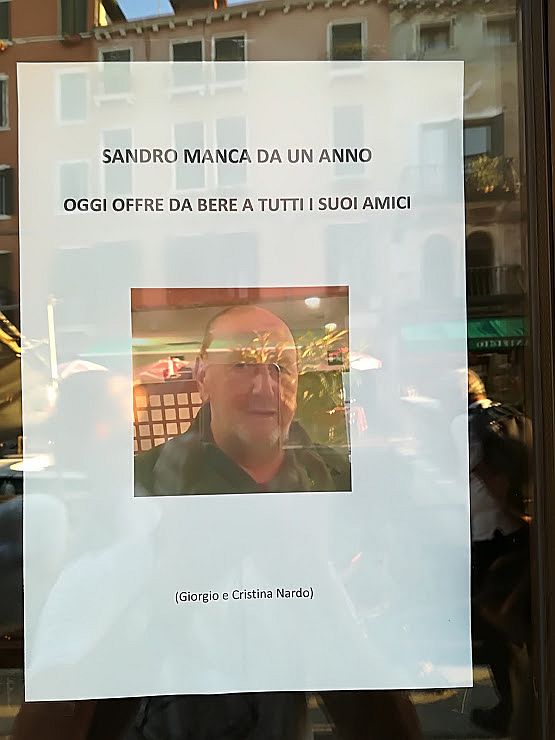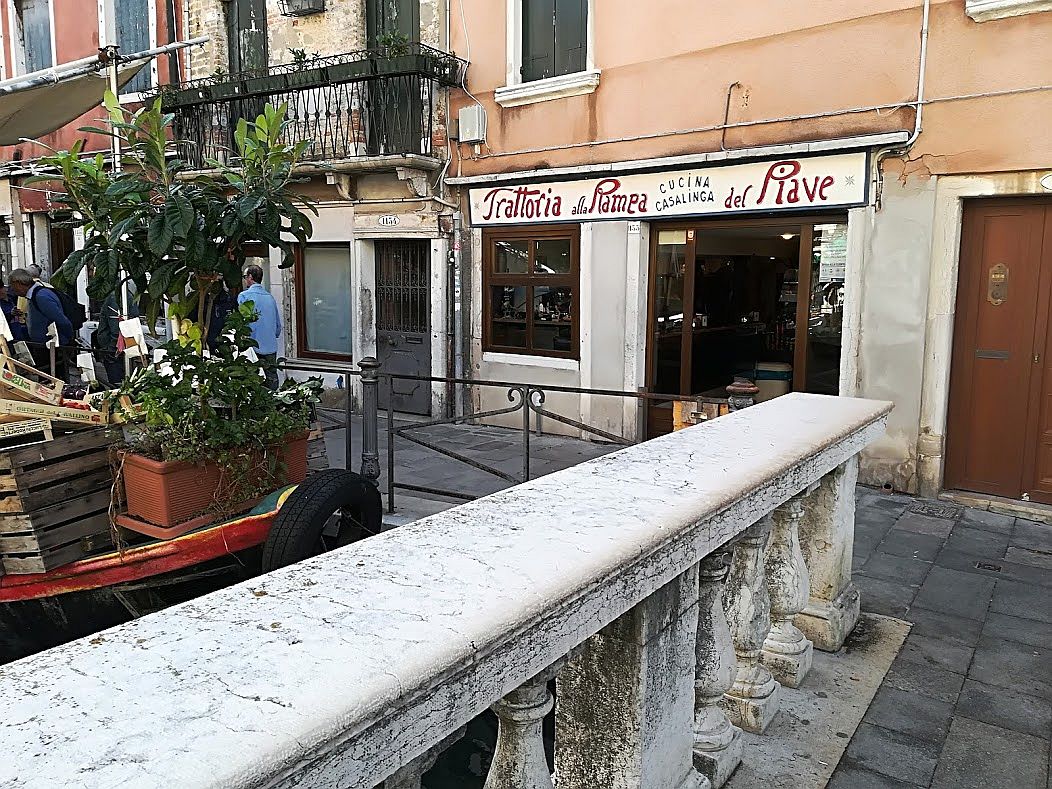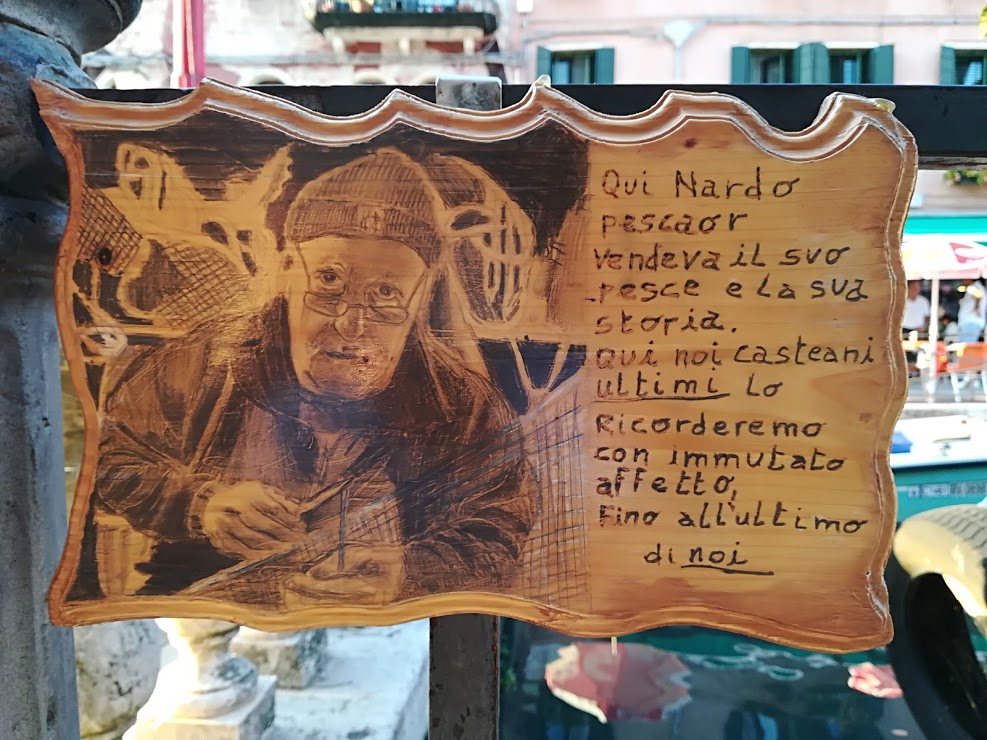A few days ago this simple notice was stuck on the glass of the front door of the Trattoria alla Rampa del Piave. That’s the exactly joint three steps from the fruit and vegetable boat and, more to the point, is by the balustrade where Sandro Nardo would sell his fish.

He was no amateur just out making a little extra money — I don’t know that he had any other source of income. In any case, he was always out, night and/or day, depending on whatever conditions were most favorable for a reasonable haul.
And then he’d weigh and bag whatever he’d caught, and in the late morning he would come and pile the bags on the balustrade. He wasn’t there every day; it seemed kind of random. Monday was often a good day to find him, as the fish shop is closed on Mondays. And the balustrade was a prime spot, being at a sort of crossroads as well as a point where the street narrows dramatically. It slows people down enough to give them time to glance, at least, at what he had caught.
We didn’t often buy from him — his prices were no bargain — but we rarely resisted when he had seppie because it’s not easy to find them fresh.


We went to his funeral at the church of San Pietro di Castello. It’s a big place, but it was crammed; I’m sure the entire neighborhood must have been there. This was impressive, though not entirely surprising.
What truly surprised me was Nicola (probably not his real name, but the one he goes by). He’s a wiry, gristly bantamweight Romanian man who showed up in the neighborhood some years ago. At first he seemed to be just an anonymous mendicant who had installed himself between the fish shop and the vegetable boat. Tourists passing — there used to be lots, all aiming for the Biennale — would make their contributions.
Then gradually he wove himself into the neighborhood net, doing odd jobs, mopping boats, helping with the loading and unloading of the fruit/vegetable boat, and so on. By now everyone calls him by name, and he reciprocates.
But now we’re all at the funeral. The service is over, and the casket is being wheeled out to the canal where the hearse is waiting, rolling along a paved walkway lined with everybody from within the radius of a mile. Nicola is standing near us, all by himself, clutching his baseball cap, and he looks stricken. I have no idea what his interactions with Sandro ever were, but they must have been important because he is weeping. A lot of people are sad, but he seems to be the only person in tears.
Having nothing else, he wipes his eyes with his baseball cap.
You couldn’t make a memorial plaque big enough to match that.

